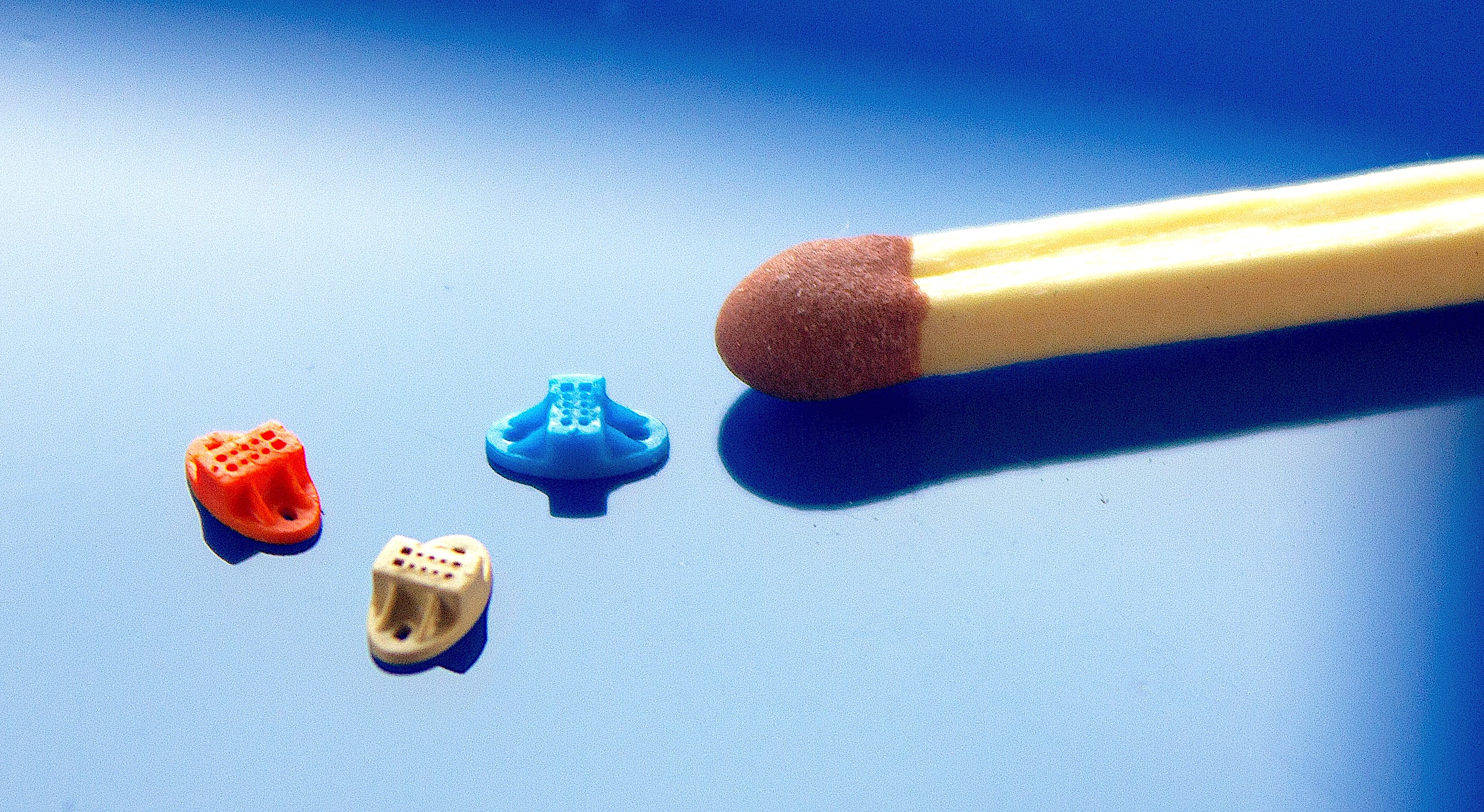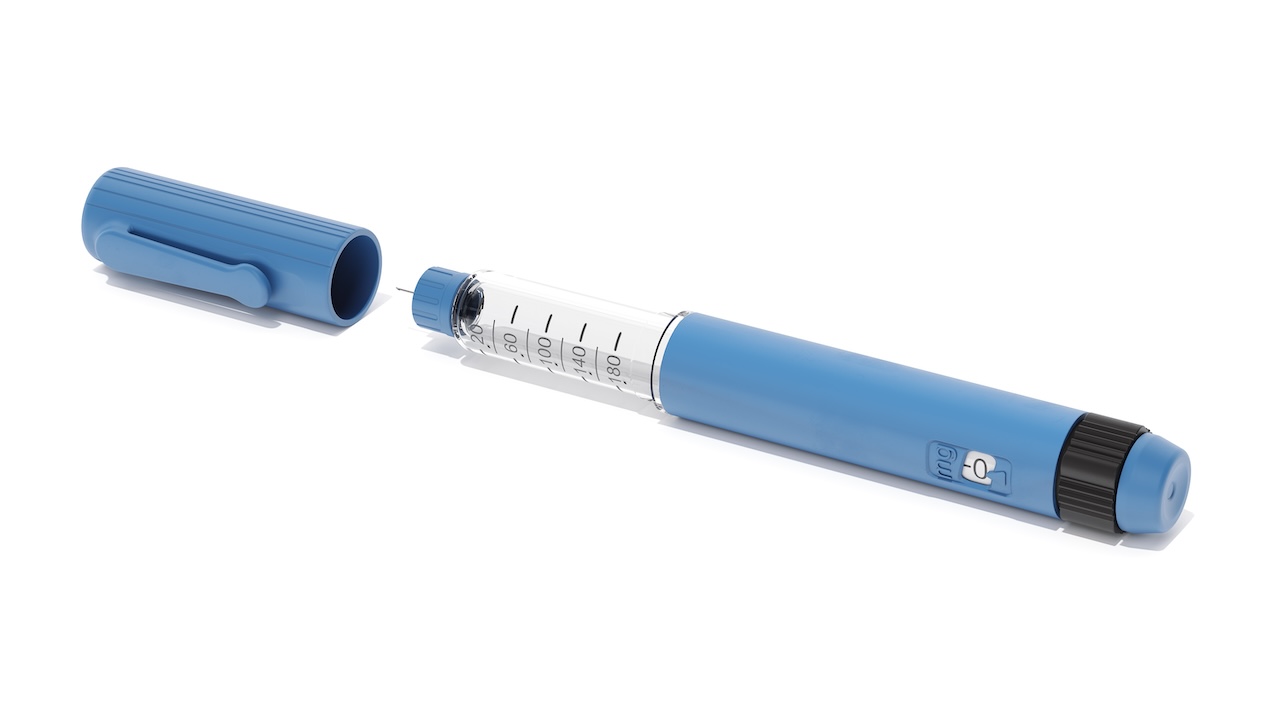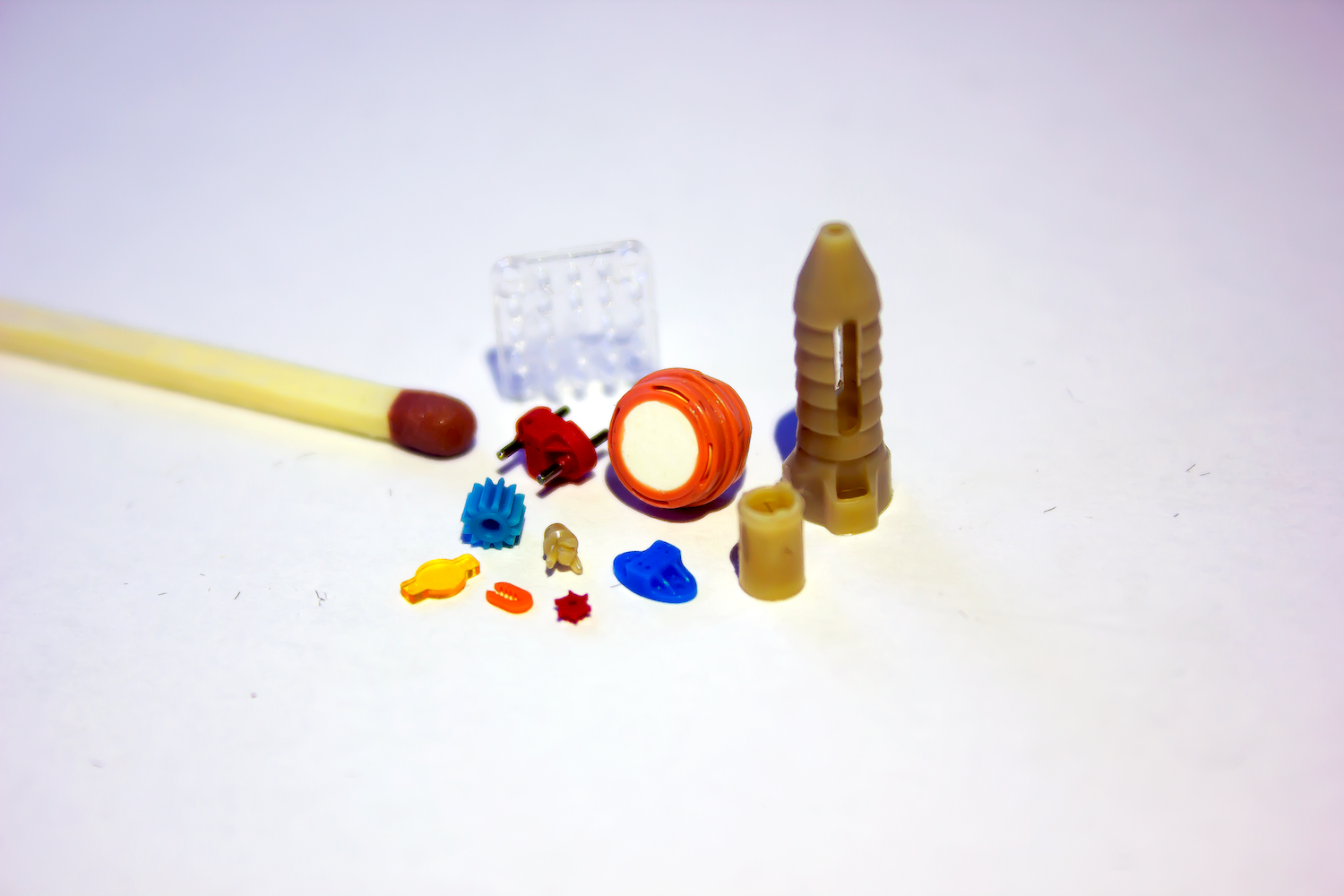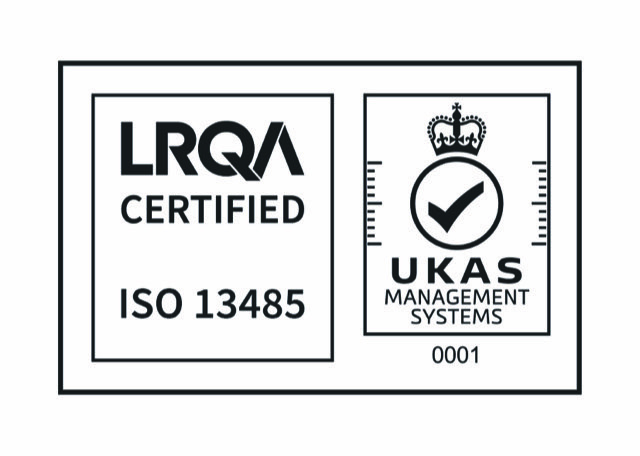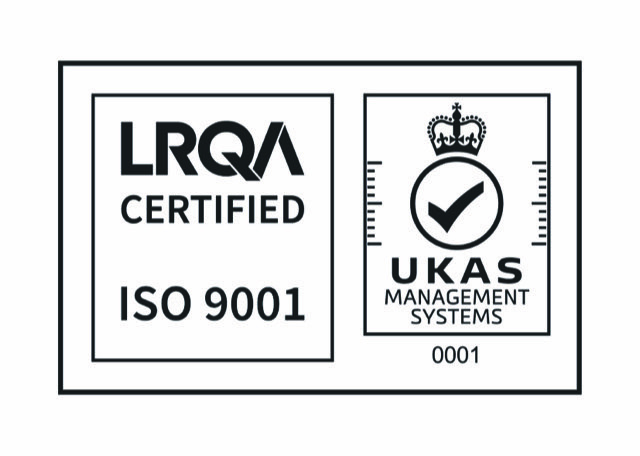A brief history of Plastics
Natural materials having plastic-like characteristics served as the foundation for the creation of plastics, which is used in almost every product nowadays.
1862: At the London International Exhibition in 1862, Alexander Parkes revealed the first synthetic plastic to the world. While trying to create a synthetic replacement for shellac for waterproofing, Parks found “Parkesine,” which was promoted as an alternative to ivory and horn.
1907: While Bakelite, the first wholly synthetic plastic, was developed by Dr. Leo Bakeland, Parkesine was made from organic materials, notably cellulose. The current plastics business has its origins here in 1907.
1920: Hermann Staudinger established the existence of what are now known as polymers. Plastics are only a subset of polymers, a general word that encompasses both all plastics and a variety of other naturally occurring chemical molecules. Our own DNA is also a polymer.
1930s and 1940s: Plastics Innovation
1932: Screw per-plasticisation in injection molding was patented
1935: Carothers and DuPont patent nylon
1938: First toothbrush with nylons tufts produced
1938: PTFE was discovered by Plunkett (DuPont)
1940: First production of PVC in the UK
1945: With containers being manufactured to replace glass bottles for shampoo and liquid soap, the sector experienced a quick boom as a result of Monsanto’s production of the LDPE Sqezy bottle.
1948: Acrylonitrile-butadiene-styrene (ABS) was introduced. Polyvinyl chloride (pvc) 12-inch long-playing records were introduced.
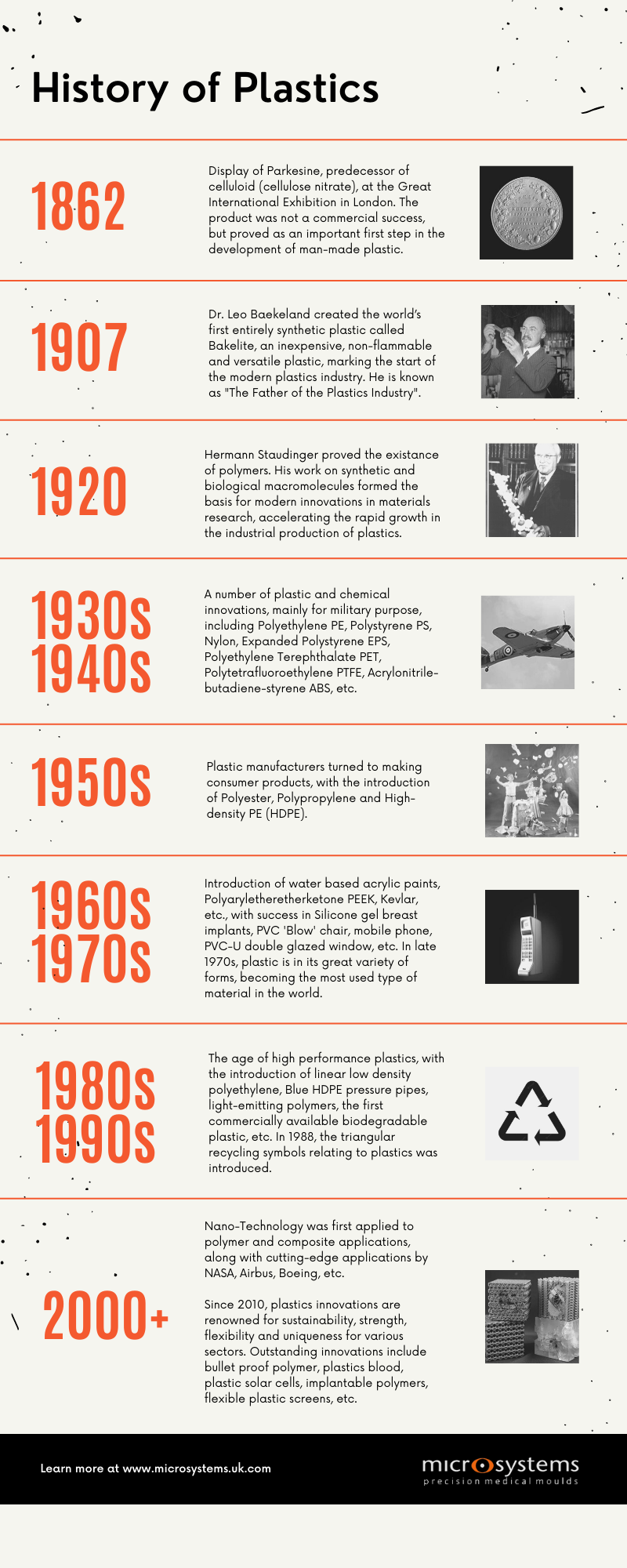
1950s: The growth of the plastics market
1950s: The introduction of polyethylene bag and acrylonitrile-butadiene-styrene (ABS)
1955: High density polyethylene was first produced in the UK.
1958: Lego creates toys out of cellulose acetate and then Acrylonitrile-butadiene-styrene polymer and patents its stud and block connection method.
1960s and 1970s: Variety in Plastics
Early 1960s: Water based acrylic paints were first introduced
1962: Silicone gel breast implants made significant advances.
1969: On the moon, Neil Armstrong planted a nylon flag.
1973: Beverage bottles made of polyethylene terephthalate were first used
1976: Plastics became the most widely utilised material type in the world due to their enormous diversity of uses.
1977: ICI created polyaryletheretherketone (PEEK) for the first time.
1980s and 1990s: Plastics with high performance
1980: First introduction of linear low density polyethylene manufacture
1982: The first artificial heart was placed in a person and was primarily constructed of polyurethane.
1983: The launch of PEEK, PPS (polyphenyene sulphide), and PES (polyether sulphone) by ICI and Bayer
1988: Introducing triangle-shaped recycling symbols for plastics
1990: The first commercially accessible biodegradable plastic is introduced by ICI as Biopol.
2000+: Endless applications
2000s: Applications of nanotechnology in polymer and composites
2009: Boeing 787’s skin was composed entirely of plastic composites, accounting for 50% of the plane’s total material composition.
Others: 3D Printed, Flexible Plastic screens, Implantable Polymers, Plastics blood, Bulletproof polymer, etc.

The demand for plastics when to the demand for steel, cement, aluminium, and glass (Plastics in the UK 2023)
Plastic output grew sixty times (from 1.5 to 90 Mt) on a global scale between 1950 and 1990, compared to four times for steel, nine times for glass, and twelve times for aluminium. The production of plastics has increased by three and a half times globally since 1990, and it has been consistent since then. During this time, demand for plastic maintained up with cement while outpacing that of steel, glass, and aluminium. The rising populations and per capita income in developing economies all over the world are largely to blame for this demand rise. In contrast, plastic demand in the UK has plateaued, with consumption about the same over the previous ten years at roughly 6 Mt annually (Plastics in the UK 2023).
Since plastics are practical, strong, affordable, and simple to form into objects, their popularity has grown dramatically over the past century in almost every country. However, it does not always receive positive reactions from the public. From the release of greenhouse gas emissions to the accumulation of plastic debris in streams and seas, plastics present complex environmental challenges, especially for the end-user destinations.
According to a recent OECD analysis, between 2000 and 2019, the amount of plastic garbage generated globally more than quadrupled to 353 million tonnes. Almost two thirds of plastic trash is made up of plastics with a lifespan of less than five years, with packaging accounting for 40%, consumer products for 12%, and apparel and textiles for 11% of this garbage. However, just 9% of it being properly recycled and the majority of it ending up in landfills, being burned, or seeping into the environment. Also, the COVID-19 problem resulted in a 2.2% decline in plastics consumption in 2020 as the economy slowed down, but an increase in littering, food takeout packaging and plastic medical equipment like masks have driven up littering.
References:
Plastics in the UK (2023) Refficiency. Available at: https://www.refficiency.org/uk-plastics-report/ (Accessed: 20 June 2023).
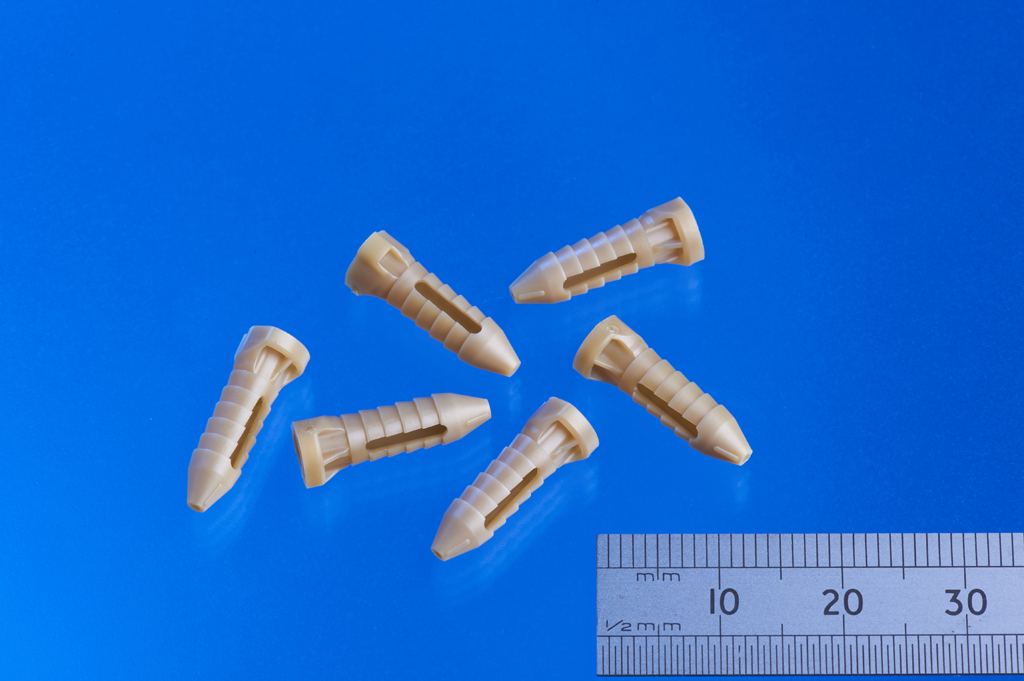
Micro Systems’s vast know-how in design, ultra-precision micro machining capabilities and expert knowledge in micro molding technology allow us to manufacture advanced microfluidic molds with tolerance as low as +/-0.001mm, with integrated optics. We have a dedicated micro molding facility, and have ISO13485 and ISO9001 certifications. For more information, please Contact us or visit our website.

